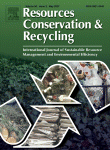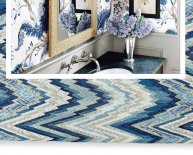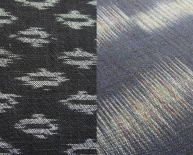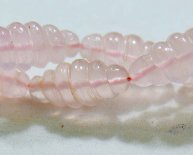
Textile Dyeing Industries
 Textile dyeing industries in Tirupur and Karur of Tamil Nadu (India) usually discharge effluents ranging between 80 and 200 m3/t of production. Dyeing is performed either by conventional winch process or by advanced soft flow reactor process. Hypochlorite, the commonly used bleaching chemical is being gradually phased out by alkaline hydrogen peroxide solution that generates less effluent and fewer solids in the effluents. Coloring of yarn/cloth takes place in the presence of high concentration of sodium chloride or sodium sulphate (25–75 kg/m3) in dye solutions. Dye bath wastewaters and wash waters are the process effluents of dyeing industry which are collected separately or together and follow the advanced treatment for maximum recycling of recovered waters.
Textile dyeing industries in Tirupur and Karur of Tamil Nadu (India) usually discharge effluents ranging between 80 and 200 m3/t of production. Dyeing is performed either by conventional winch process or by advanced soft flow reactor process. Hypochlorite, the commonly used bleaching chemical is being gradually phased out by alkaline hydrogen peroxide solution that generates less effluent and fewer solids in the effluents. Coloring of yarn/cloth takes place in the presence of high concentration of sodium chloride or sodium sulphate (25–75 kg/m3) in dye solutions. Dye bath wastewaters and wash waters are the process effluents of dyeing industry which are collected separately or together and follow the advanced treatment for maximum recycling of recovered waters.
Dye bath water after treating by sand and nanofiltrations (NF), the permeate is used in process for dye bath preparation and the reject of about 20–30% is sent to multi effect evaporator (MEE)/solar evaporation pond (SEP). Wash waters treated using a sequence of physicochemical and biological unit processes are passed into two stages reverse osmosis (RO) membrane systems and then the permeate is reused in the processes. The rejects about 15–20% of the inlet volume is subject either to nanofiltration for salt recovery or sent to evaporators. The final rejects from nanofilter systems is directed to multi effect evaporator system where condensed waters are recovered. The removal of total dissolved solids (TDS), chemical oxygen demand (COD), chloride and sodium are in the range of 80–97%, 91–97%, 76–97% and 96%, respectively. Multiple effect evaporators out flows of about 2–3% of the effluent volume are allowed for solar evaporation and the solids are disposed off. The cost of operation of MEE is about INR 400/m3 of the rejects. The cost of water recovery is about INR 60–80/m3 including commissioning and maintenance whereas price of raw-water in Tirupur is about INR 100/m3.
Abbreviations
- INR, Indian rupees (one USD equal to INR 44);
- CPCB, Central Pollution Control Board;
- APHA, American Public Health Association;
- RO, reverse osmosis;
- NF, nanofiltration;
- MEE, multiple effect evaporators;
- TDS, total dissolved solids;
- BOD, biochemical oxygen demand;
- COD, chemical oxygen demand;
- SAR, sodium absorption ratio;
- TH, total hardness
Keywords
- Dyeing industry;
- Wastewater recycling;
- Reverse osmosis;
- Membrane process;
- Nanofiltration
















